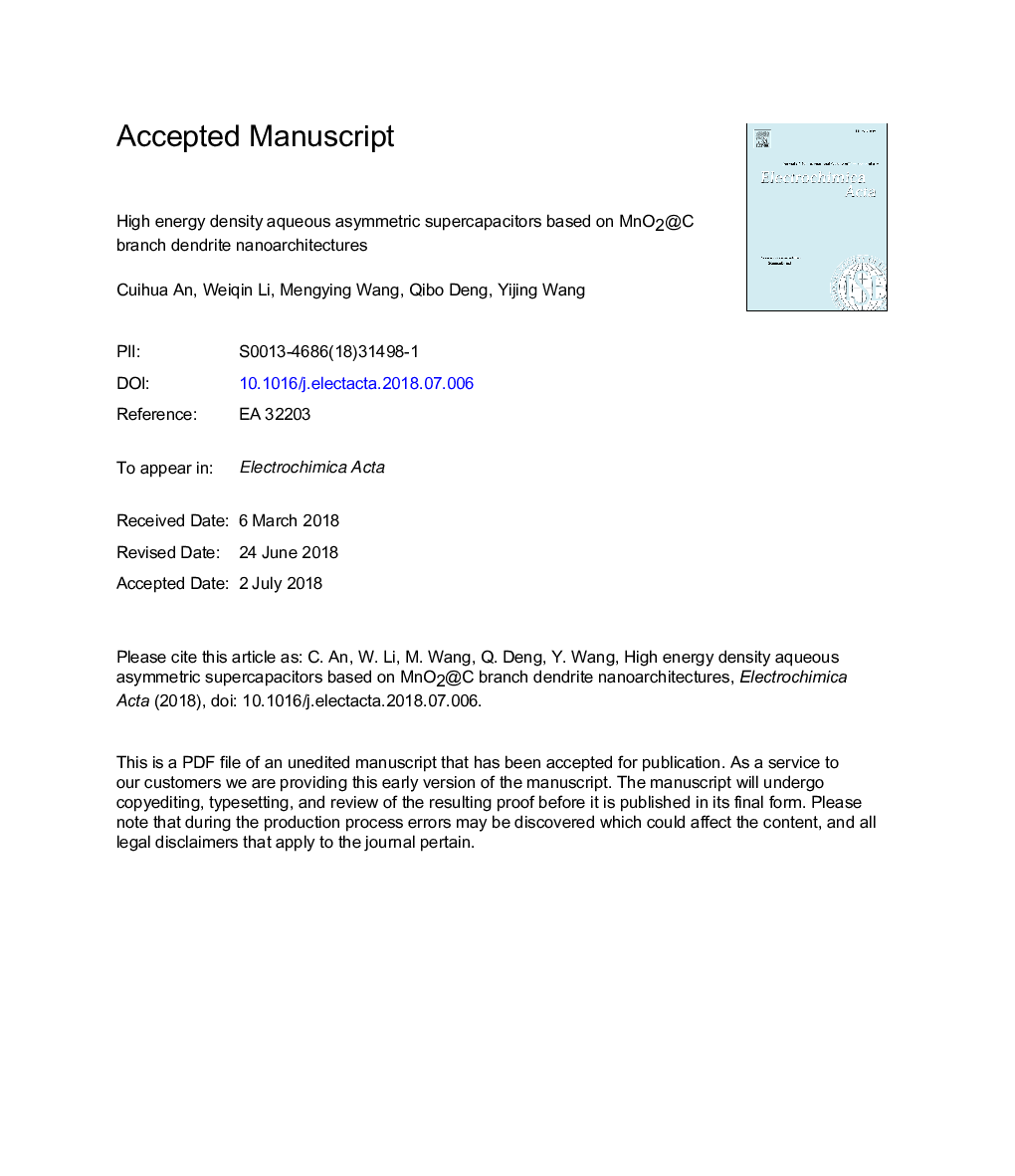| Article ID | Journal | Published Year | Pages | File Type |
|---|---|---|---|---|
| 6602012 | Electrochimica Acta | 2018 | 29 Pages |
Abstract
The flourishing development of the asymmetric supercapacitor (ASC) device has improved the energy density of supercapacitor in some extent. However, the energy density of the present ASC device is too low to meet the requirement of daily life. The two principal factors determining the energy density are the specific capacitance and the voltage window of the ASC device, which are closely related with the kinds of the electrode materials and the electrolytes. In this work, a new MnO2@C branch-dendrite (MnO2@C-BD) nanoarchitectures as a whole have been triumphantly in-situ prepared and acted as the cathode materials of the ASC device. Moreover, the MnO2@C-BD materials are assembled by innumerable MnO2 nanoparticles coated by the thin carbon layer which provides porous texture and benefits the transportation of ions and electrons. The electrochemical performances of the MnO2@C-BD electrode were assessed in 5â¯M lithium bistrifluoromethanesulfonimide (LiTFSI) electrolyte with the purpose of broaden voltage window aqueous electrolyte. Subsequently, the nanoporous carbon (NPC) materials have been acted as the anode for the MnO2@C-BD//NPC ASC device. As we expected that the MnO2@C-BD//NPC ASC device can offer 3â¯V voltage window and exhibit the maximum energy density of 88.7â¯Wh kgâ1 at 103â¯Wâ¯kgâ1 power density.
Keywords
Related Topics
Physical Sciences and Engineering
Chemical Engineering
Chemical Engineering (General)
Authors
Cuihua An, Weiqin Li, Mengying Wang, Qibo Deng, Yijing Wang,
